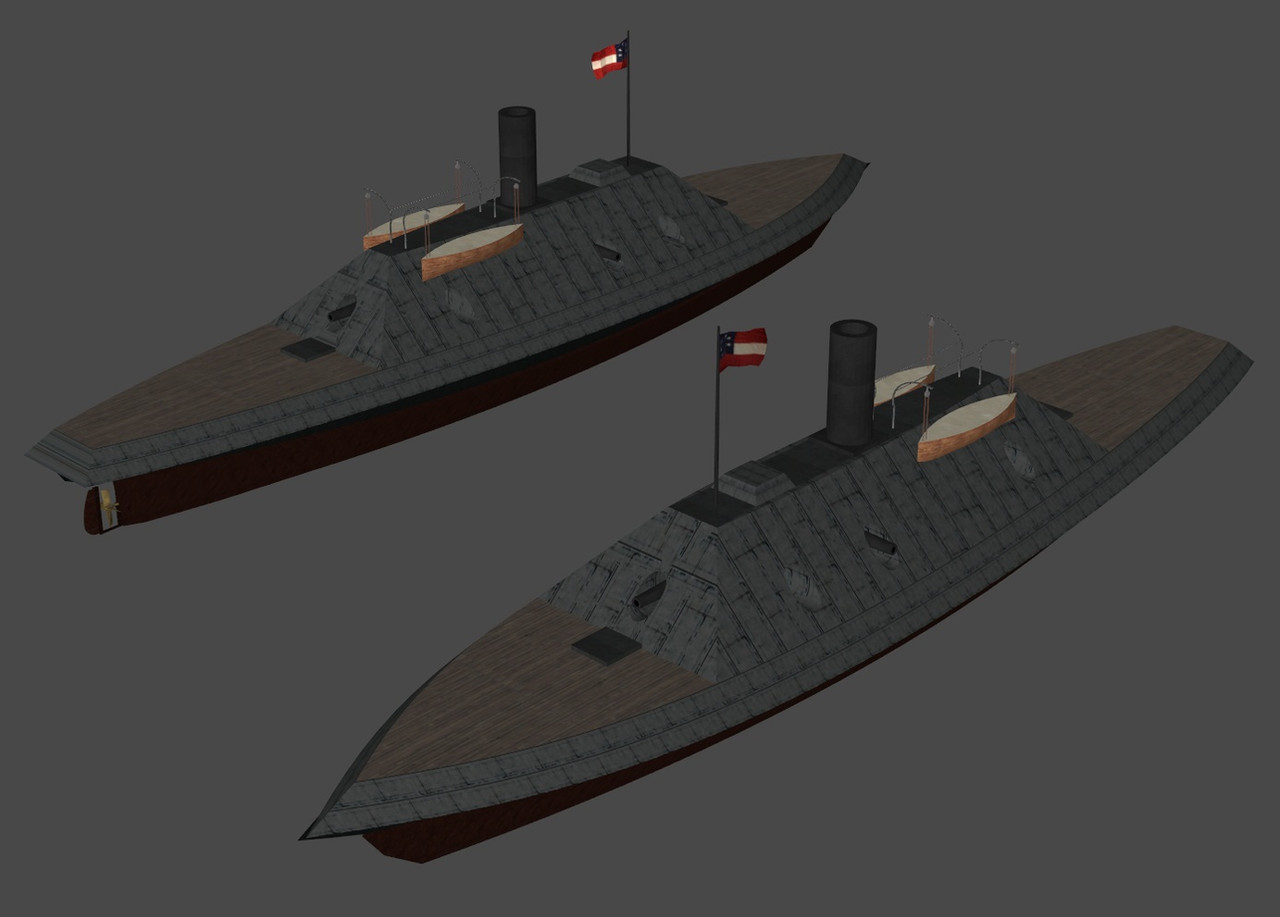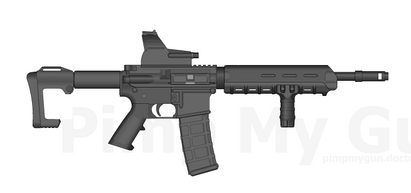HOME | DD
 DigitalExplorations — CSN - CSS Tuscaloosa ironclad ram (STL port)
DigitalExplorations — CSN - CSS Tuscaloosa ironclad ram (STL port)

Published: 2023-10-20 23:12:02 +0000 UTC; Views: 1510; Favourites: 17; Downloads: 3
Redirect to original
Description
Ported to OBJ, textured, and further modified from the STL format low poly tabletop war gaming model created by Patrick Woodard. Preview picture posed in XNALara XPS. You can download Mr. Woodard's original STL model as part of his Confederate Ironclads Pack at the link below but be warned! STL models normally come untextured because they're made for use with 3D printers, with the end user expected to hand paint the 3D printed model. Furthermore I've added extra parts to this one in order to soup it up a bit and make it look somewhat better. If you want this to look the way it does in the above picture (or even better if you have the skill), then you'll have to round up your own textures and extra parts and do the job yourself, just like I did. Here's that link:
www.thingiverse.com/thing:3179…
CSS Tuscaloosa was the second member of what many naval historians deem to be the Huntsville class of Confederate Navy ironclad rams from the American Civil War (1862-65). These were somewhat smaller modified versions of the base design used for CSS Albermarle (see separate entry), the most powerful Confederate ironclad ram of the war in terms of firepower, and are easily distinguished from both the Richmond class and many other Confederate ironclads by what is known as their diamond hull design. This was a simplification of the basic Richmond design with less streamlining and hull curvature in order to both speed construction and make the best use of limited Confederate resources in building them, with a likeness to a rather flattened hexagon when viewed from the top down. There were only three in the class: lead ship CSS Huntsville, CSS Tuscaloosa herself, and an authorized but never built third class member for which draft plans were saved after the war and still exist to this day. These plans are one of our chief sources of information on the Huntsville class. Like many CSN ironclads Tuscaloosa's main engines came from an existing ship, in this case the sternender steamboat Chewala, and as in all such cases these were ill-suited for use in an ironclad warship, which made Tuscaloosa slow given her mass. Sources disagree on whether she had one screw or two to drive her. This CG model shows her with one large screw out of convenience, given that this was common for many CSN ironclads of her approximate size and general configuration (and was easier to do - ed.). Armament consisted of two 32-pounder guns on the broadside, one each port and starboard, a third in the aft firing position, and a 6.4 inch Brooke rifled cannon in the fore position. Her iron plate armor was a uniform 4 inches overall per surviving data.
Tuscaloosa herself began construction in the latter part of 1862 and entered CSN service in February of the following year. She became part of a small CSN fleet assigned to defend the important port city of Mobile, Alabama. She was not one of the better CSN ironclads by most accounts. She was not very well built and tended to leak, living conditions aboard were so bad that her crew preferred to bunk on shore, and the fact that she was underpowered for her mass limited both her speed and mobility, and which in turn severely limited her combat capabilities. Her sister ship Huntsville was no better, and the CSN had to content itself to using them primarily as floating defense batteries, given their obvious unsuitability for direct naval engagements. That's one of the reasons why neither were present at the Battle of Mobile Bay in 1864, as both were still at Mobile proper aiding in its defense. Neither could escape upriver given their underpowered engines when approaching Union land forces began to move on Mobile itself, and so both were scuttled on 12 April 1864 to prevent their capture, the same day that Mobile surrendered. The wrecks of both Huntsville and Tuscaloosa were rediscovered in 1983 by an expedition led by retired maritime lawyer Sydney Schell and still found to be in "excellent condition," although Tuscaloosa had broken in two. There was later talk of possibly raising one or both for museum restoration purposes along the lines of what was done with the former Union ironclad USS Cairo (see separate entry on the Union "Cities"class), but to date nothing has come of it given the tremendous expense and difficulties involved.
This model can be used for any of the Huntsville class CSN ironclads either built or unbuilt, although it is missing many of the finer details of the originals and I probably do not have the small boats placed correctly (if present, some surviving images show them without small boats). That's because this was originally created for use as a small naval war gaming miniature. I for my part only added the lower hull structure, the missing guns, the small boats, the flagpole, and the flag. I also went with one screw on my added lower hull instead of two as some sources state, given that it's a simple reuse of my stock Richmond class lower hull hack job. That said I think this is still decent for what it is, and it will do nicely as a placeholder for now. I hope you have fun with it too once you download it and start playing with it yourselves. XD
For non-profit, non-commercial use only. If you use, mod, re-release in original or modded form or do anything else with Mr. Woodard's models, please give him credit for his original handiwork, okay? Thank you.




















